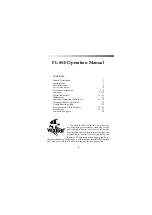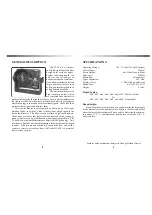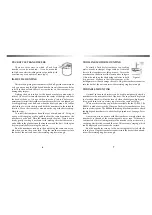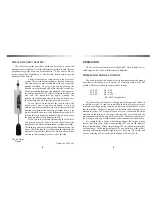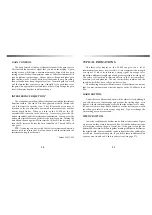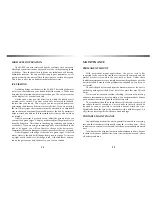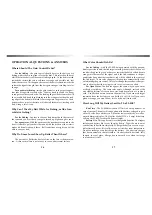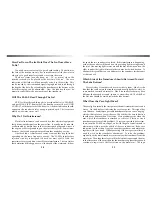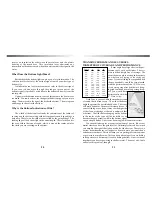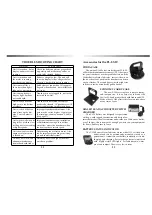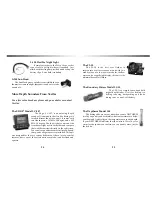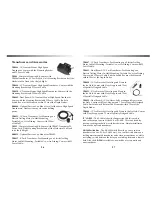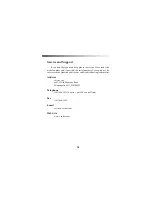
14
15
HIGH SPEED OPERATION
The FL-8SE can accurately read depths at almost any boat speed.
Here high speed is defined as any speed at or above the planning speed
of the boat. Once the boat starts to plane out, turbulence will develop
behind the transom. If you have the wrong type of transducer, or it is
poorly mounted, the unit will lose the bottom at a certain boat speed.
This is due to all of the air bubbles in the turbulent water.
ICE FISHING
Ice fishing brings out the best in the FL-8SE. The stable platform of
ice lets you concentrate on your bait and the fish around it. The bottom
becomes less important because it never changes. The only movement
on the display is of your bait and fish.
Unlike open water use, the direction in which the transducer is
pointed is very critical. You want your bait to be located in the dead
center of the cone sound. This way you can see very small baits at low
gain settings and also see fish come in from all sides. If you are not using
the Ice-Ducer system, the transducer must be attached to an adjustable
arm so that it can be manually pointed directly at the bait. Sometimes it
helps to attach a bubble level to the transducer so that you know when
it's straight.
After your system is properly set up, adjust the gain until you see
your bait as a green target. You may need to readjust the gain control to
keep the bait green. This is due to the changing condition and position
of your bait. If you are using a swimming bait or a lure that darts to the
side as it's jigged, you will see the color change as the bait moves.
Sometimes it may even disappear if the bait goes out of the cone of sound.
Fish will appear at the edge of the cone as a green target. If the fish
moves closer to the bait it will change from green to orange. If it moves
up, right next to the bait, it will change to red. If the fish leaves and you
can no longer see your bait, chances are, you've been robbed.
MAINTENANCE
PERMANENT MOUNT
With permanent mount applications, the power cord is left
connected to the source, the transducer is not easily removed, and the
gimbal bracket is screwed to the seat, deck, or dash. Under these
conditions maintenance is very simple because nothing changes once the
unit is installed. Because of this problems can sneak up on you if you're
not careful.
The unit should be removed from the bracket whenever the boat is
parked to guard against theft. Don't store it in a place that may fill with
water.
Power connections need constant checking. Corrosion can develop
and cause intermittent or loss of operation. Connections made to battery
posts need extra attention because of the battery acid.
The transducer should be checked for scratches and cracks which
can reduce the unit’s sensitivity. Cuts or breaks in the cord should be
repaired as soon as possible so corrosion doesn't attack the wire.
Periodically clean the face of the transducer with a mild detergent. An
oily film can develop which will cause weak readings.
PORTABLE MAINTENANCE
In portable applications the unit is generally mounted to a carrying
case and the transducer is frequently removed, as is the power. These
conditions can cause more wear and tear than a permanently mounted
unit.
In addition to the previously mentioned maintenance items, be sure
to check for broken or pulled wires, loose screws or hardware, and, above
all, battery condition.

